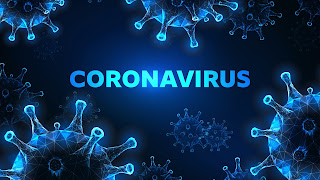7 Fruits You HAVE to Eat Organic
7 Fruits You HAVE to Eat Organic
Each year, a non-profit organization called the Environmental Working Group, or EWG, does extensive testing of crops to determine which have the most pesticide residue. The majority of the entries on the list are fruits. Many of them were found to have several different types of residue – even up to 10 different kinds on one crop!
We are going to break down the top 7 “dirtiest” fruits according to EWG, including what makes each of them particularly vulnerable to pesticide residue. To protect the health of your family, we recommend that you always buy these foods organic if you can.
Be sure to stick with us until the end, where we let you in on a little tip for cleaning your produce that can do a better job of eliminating pesticides than simply rinsing in water. We’ll also let you know about some foods that have been found to have very little pesticide residue.
But for now, let’s dig into the most contaminated produce that can land on your plate. If at all possible, budget for organic versions of the following.
1. Strawberries
Strawberries tend to top the list ever year. More than one-third of strawberry samples analyzed in 2016 contained 10 or more pesticide residues and breakdown products, which occur as pesticides transform over time. There are a few possible explanations for why strawberries hold on to so much pesticide.
For starters, they are very tender fruits that have seeds on the outside. The seeds create little divots that allow pesticide to hide. The soft skin also allows for easier absorption of whatever liquid comes into contact with the fruit.
Strawberries are also grown in direct contact with the dirt and eaten as-is, i.e., not peeled. And because strawberries are so delicate, they are not washed before packaging and shipping.
2. Nectarines

Nectarines are on the list because, like strawberries, they are very delicate fruits. Every tested sample of nectarines contained at least one pesticide. Cousin to the peach, nectarines don’t have any fuzz to hold pesticides off of its skin, and we eat the fruit skin and all.
The skin of a nectarine doesn’t put up much resistance to absorption of chemicals, but some pesticides are actually designed to be sucked into the fruit to protect against pests that like to burrow in and consume the juice.
3. Apples
Apples are especially problematic because they tend to be doused in chemicals even after harvest. Diphenylamine is an antioxidant chemical treatment meant to prevent the skins of apples from developing brown or black patches called “storage scald.”
Of course, no one wants bruised or patchy apples, but this practice of treating apples after harvest leaves about 80% of all samples positive for residue. Residue levels are at a higher concentration than found on other fruits, too.
4. Grapes

More than 50 different pesticides have been found on grapes. And because grapes are grown in tightly grouped bunches, pesticides and other debris lingers between the fruits. Not surprisingly, both raisins and wine have also been found to be high in dangerous residue.
Grapes need careful washing for this reason, even organic ones. In fact, it is best to soak grapes rather than just rinse them, and to remove any with visibly split skin.
5. Peaches
Peaches are a frequent entry on the Dirty Dozen list. Somewhere in the realm of 60 different types of pesticide residue have been found on peaches in recent tests, with a full 98% of conventional peaches containing at least one type.
Peaches have very soft skin that is especially vulnerable to absorption of chemical residue. If you can’t always afford organic peaches, any of the citrus fruits with a peel you remove are safer. Peeling peaches can also help reduce your exposure.
6. Pears
Pesticides on non-organic pears have more than doubled in recent years, according to tests performed by the U.S. Department of Agriculture. A full 48% of the pears tested showed the residue of five or more pesticides.
For comparison’s sake, just 3% of pears showed that level of contamination in 2010. The type of poison found on pears includes fungicides to manage fungus and mold as well as insecticides to ward off hungry pests.
7. Cherries

Finishing up our list of the top seven most pesticide-laden foods, cherries may be especially affected because pesticides are applied to cherry trees at multiple stages, starting when the trees are dormant.
Sprays are also applied when the flower petals fall and again in late spring. Though conventional producers tend to avoid spraying when the cherries are close to harvest, the fruit still clearly retains residue from all the previous sprays.
When it comes to these 7 very healthy food products, you do best to buy them organic so as not to dose your family with pesticide along with the critical vitamins and minerals. However, because produce is so healthy, we don’t want to discourage anyone from eating these foods.
Here’s some good news: produce like avocados, sweet corn, pineapples, papayas, asparagus, onions, and cabbages show up with vastly less pesticide residue even in their conventionally farmed forms.
All produce should be washed carefully before consumption, even organic. Some organic produce can have pesticide residue as well, simply because it was farmed in proximity to a location that does use pesticides.
Research shows that the best way to kill any active pesticide residue is to soak your produce in a solution of water and baking soda before giving it a final fresh water rinse. For safety’s sake, make sure you’re getting the organic version of these 7 fruits




Comments
Post a Comment